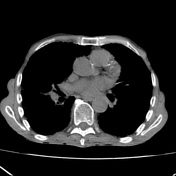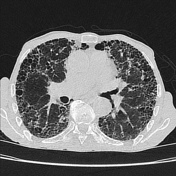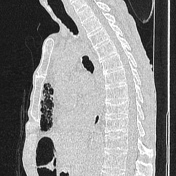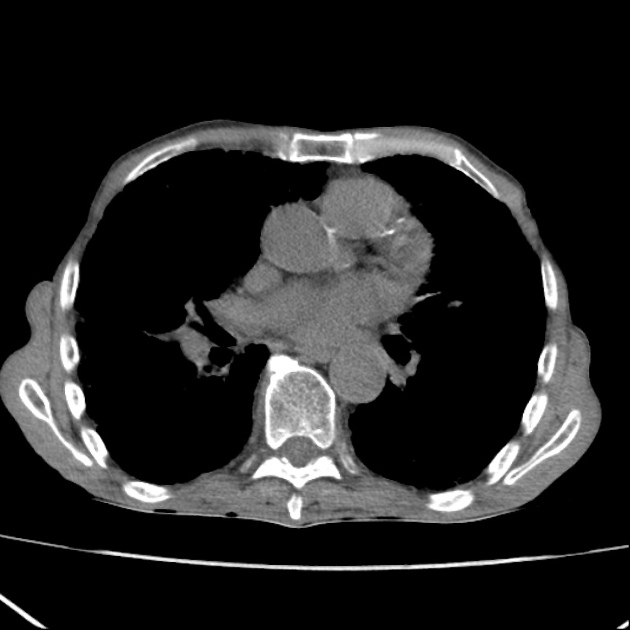Presentation
Dyspnea
Patient Data
Age: 70 years
Gender: Male








Download
Info

There is advanced pulmonary fibrosis with extensive subpleural interlobular septal thickening and marked peripheral honey combing most pronounced in the bases. Widespread traction bronchiectasis is demonstrated throughout all lobes. No pleural fluid or pleural nodularity is demonstrated
Case Discussion
Typical appearances of end stage idiopathic pulmonary fibrosis.




 Unable to process the form. Check for errors and try again.
Unable to process the form. Check for errors and try again.